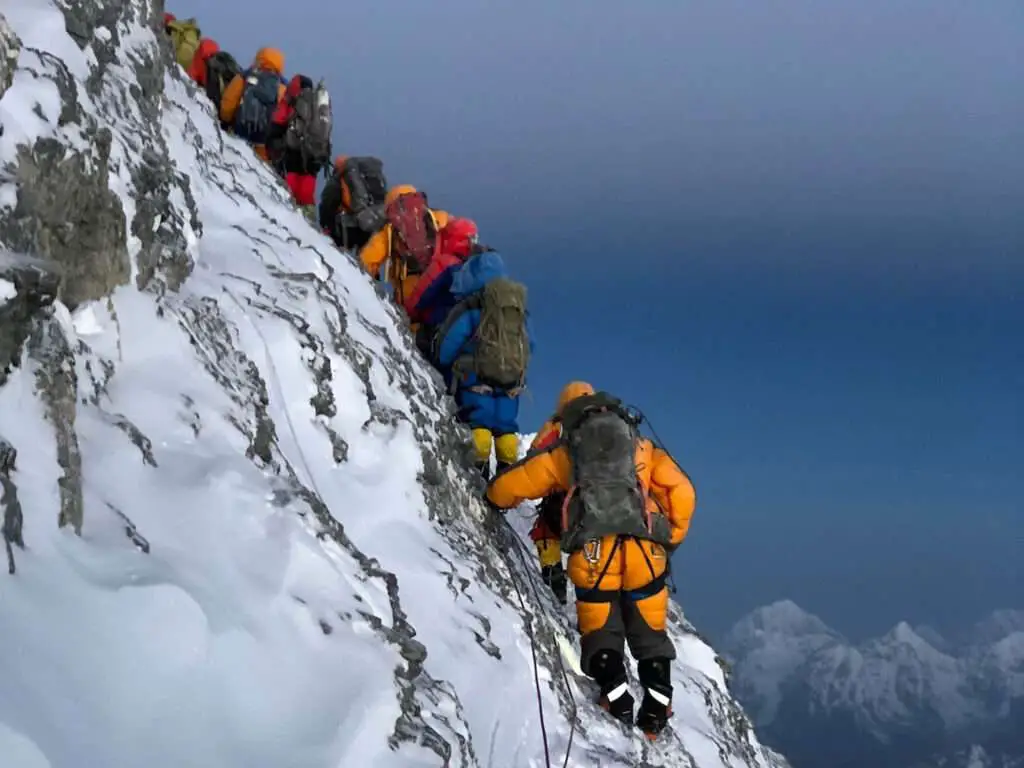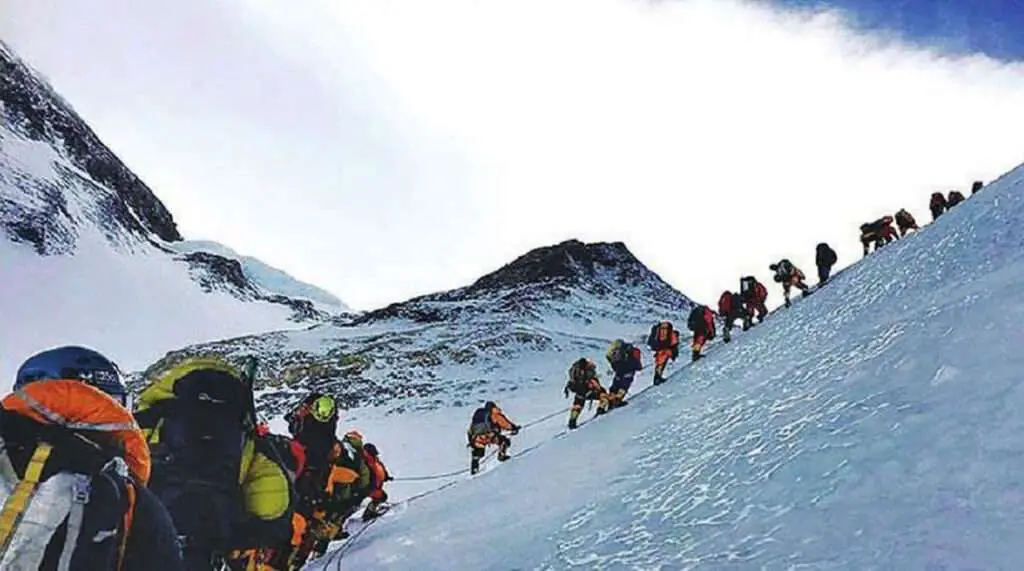By Shantanu Guha Ray in Kathmandu, Nepal
Three Nepali sherpas – the biggest stakeholders of mountaineering across the world – are missing after being buried by a block of snow on Mount Everest.
The accident, which happened last week, has triggered some serious discussion in Kathmandu about the community and its role in mountaineering.
The sherpas were clearing a route to be used for this year’s spring climbing season to get to the top of the world’s tallest mountain.
Towering 8,850m above sea level, Mount Everest is located on the Nepal-Tibet border.

Nepal’s state newspaper, The Rising Nepal, said the avalanche took place near the treacherous Khumbu icefall – a steep portion of a glacier shaped like a frozen waterfall. The icefall is a notoriously steep and treacherous part of the Khumbu glacier. Now the climbers must negotiate the glacier that falls between the base camp and camp 1. Many Sherpas feel this is more dangerous than reaching the summit.
Why? It is because the huge pieces of ice can break anytime without warning. And the result can be catastrophic.
And it is the Sherpas’ job to find a safe path across the heavily crevassed Khumbu glacier. The debate – widely circulating in the capital of Nepal now – revolves around the Sherpas and the status they deserve.
The Sherpas are the lifeline and soul of the Everest region.
“But the way they are being projected by the mountaineers from the Western nation is grossly wrong,” says Bijay Amatya, one of Nepal’s top tourist operators.
He says Westerners often recognize Sherpas as people who are tasked with the arduous porting of essentials up ahead from the base camp of Mount Everest.
“And this is where the dissent is growing, and the Sherpas have a genuine demand that they should be treated as mountaineers because they open up the route to Mount Everest. They are not porters, certainly not. This is so misguided,” says Amatya.
Time and again, Sherpas have demanded their status be hiked as climbers. Descending from Tibet, Sherpas have been indigenous to this region for more than 500 years. Honesty, hard work, and responsibility are the virtues of this Buddhist community that dwell in the mountains.
The Himalayas are central to the Sherpa community. And every time there is a crisis, it is the sherpas who are called to initiate the rescue operations. Overcrowding, bad weather and a record number of permits being issued are some of the contributing factors to the accidents on the way to the summit.
But experts feel it’s an increase in the number of less experienced climbers that is making the problem worse. Time and again, many underestimate the risks to novice climbers. “Everest is never easy and the Western mountaineers – many who have very little experience – are constantly seeking help from the sherpas. So, you realize the role of the sherpas is much more than that of the mountaineers. Yet, they are treated as porters,” says Ashok Pradhan, a top hotelier in Kathmandu.
It is a Sherpa who has climbed Mt Everest the maximum number of times, every Sherpa is a mountaineer and definitely not a guide or a porter.
“The Sherpas, descending from Tibet have been indigenous to this region for more than 500 years. Honesty, hard work, and responsibility are the virtues of this community that dwell in the mountains,” says The Himalayan Glacier in a report.
Spring is the prime time to climb Mt. Everest, some also climb in the less favourable autumn season. A total of 243 climbers from 47 countries have got permission to climb the mountain this spring season. Seasoned mountaineer and writer Alan Arnett was quoted saying there are huge risks for those who attempt to scale Everest with little or no training. “Climbers need to wake up and understand that climbing a big peak like Everest is extremely risky.”
Nepal is home to eight of the 10 highest mountains in the world. Mountaineering is a significant source of revenue, employing large teams of Sherpas.
And without Sherpas, there is no expedition.

People in Kathmandu told this reporter that Sherpas deserve much more than what they are offered by Western mountaineers. Sherpas are not just the muscle behind any expedition and they should not be seen as people carrying extra gear such as oxygen bottles, water and food. “They are also expert navigators. Enduring freezing temperatures of -30C down to -50C. They are the ones who help climbers to negotiate extreme altitude, icefalls and dangerous avalanches,” says Amatya.
Consider this one. Right from Camp 4 up to the summit, mountaineers travel through what is commonly known as the “death zone”. This region is way above 8,000m and almost all climbers – barring a handful – need supplementary oxygen which is carried by the Sherpas in bottles. This is not all. The Sherpas work closely with the mountaineers to help them reach the summit. And then they also work overtime to ensure their clients conserve enough oxygen supply for the return journey. These are strategic decisions only a Sherpa can make.
“Sherpas have gone to Summit many times but what is unique is that they treat every climb with the same sincerity as the first,” says Amatya.
He says the mountaineers leave after their mandatory photo sessions but it is the Sherpas who clean tones of rubbish left behind on the mountain.
In the language of next-door Tibet, Mount Everest is known as Chomolungma, which translates into goddess mother of the world. Sherpas firmly believe that the summit of Chomolungma is home to the Buddhist goddess Miyolangsangma. And that it was power and blessings that helped the very first explorers, Sherpa Tenzing Norgay and New Zealander Edmund Hillary, to reach the top in 1953.
Modern technologies now help the mountaineers, including specialised satellite-fixed tents which can be remote controlled from any part of the world and which has solid advance warning systems to save a climber from avalanches. But Sherpas always need to work harder than before.
This is also big business in Nepal where tour operators charge mountaineers anywhere between $30,000 and $150,000 for getting the permits, booking equipment, airfare to the base camp, finding Sherpas – sometimes it is five Sherpas to a mountaineer if the person seeks a high-end luxury package that has unlimited bottled oxygen and even hot showers – and finalising emergency plans. The Nepalese government charges an additional $11,000 fee for the Everest climb.
And despite being an integral part of the Nepalese tourism market, the Sherpas feel they are routinely neglected, their contribution to mountaineering barely recognised by the government, and also the global committee of mountaineers.
The time has come for a change. The Sherpas want it.



